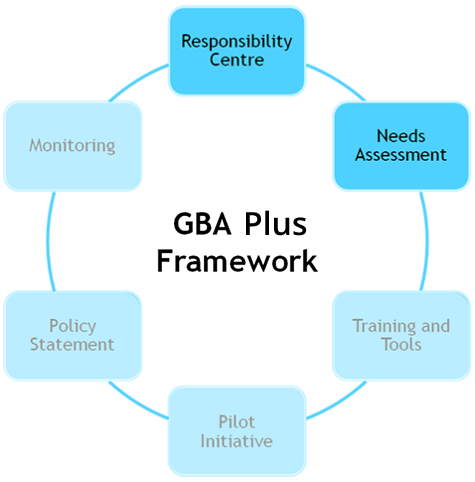Introduction to GBA Plus
Undertaking an organizational needs-assessment
An organizational needs-assessment is meant to capture the current situation in terms of existing GBA Plus capacity and resources both within the organization and across your sector of work, as well as to identify key gaps.
This includes:
- Assessing what has already been done (e.g. if any gender-based research or reports have been produced, and if relevant initiatives have previously been implemented)
- Identifying existing internal competencies for GBA Plus
- Scanning for external resources or best practices related to your sector
- Identifying available data sources disaggregated by sex and other factors, and any additional research that would be useful to you
Access to data sources and research conducted in a way that considers sex, gender and other identify factors is essential to informing the development of responsive policies and programs. If this type of information is unavailable to you, it is important to note this as part of your needs-assessment exercise.
Use all of this information to establish basic goals and a plan for framework development, and to prioritize resources.

Case Study: GBA Plus framework in a public security organization
Case Study: GBA Plus framework in a public security organization
3 - Organizational needs-assessment
The Rockford GBA Plus working group met to discuss what type of work has been done previously on promoting gender and diversity, and what information is available.
They identified an internal report from eight years earlier, under a previous Chief of Police, which gathered information and set benchmarks for a Rockford Police Department’s Outreach Recruitment Project, aimed at increasing the number of women in the department. This information provided important background and meant that some work did not need to be duplicated.
They also identified a 2012 report on Gender Audits in Policing Organizations, commissioned by Status of Women Canada. It provides a summary of gender audits conducted in several police services, and provides examples of frameworks and processes to build and enhance gender responsiveness in police organizations.
In order to identify areas to shape specific goals and objectives for RPD, the GBA Plus working group also decided to undertake a survey of employees within the department, to obtain feedback on their experiences, and to identify the barriers to increasing and maintaining diversity.
From this exercise, several themes emerged for further research and analysis – including work/life balance issues, a lack of transparency in certain advancement opportunities, concerns about physical testing requirements, as well as regarding equipment design. If addressed, these issues may encourage employee retention and help increase diverse representation at all levels of the organization. These items were identified for further research.